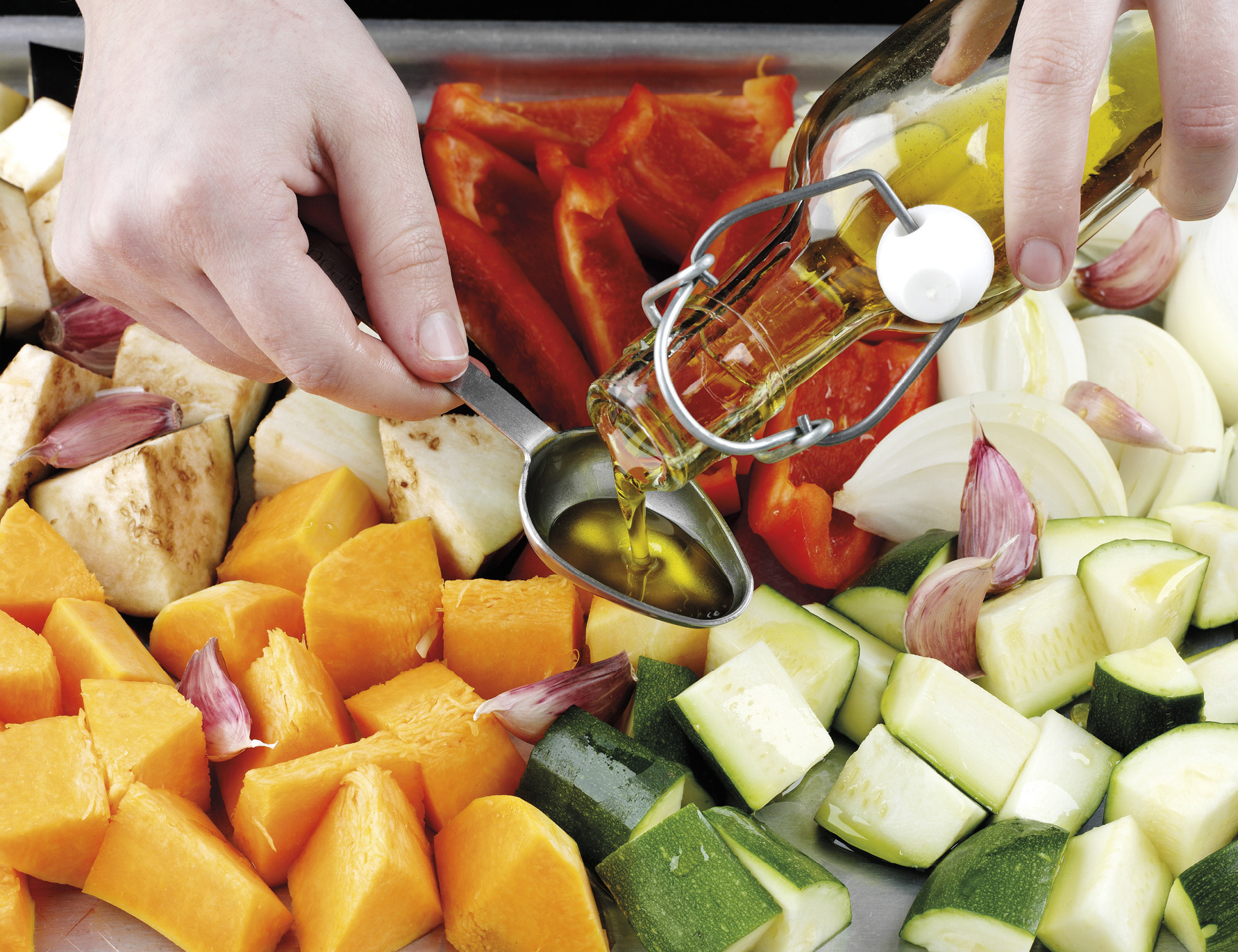g VEGETABLES g CONTENTS
HOW TO ROAST VEGETABLES
When vegetables are roasted in a hot oven, their natural sugars caramelize and their flavors intensify. The dry heat of the oven also gives the vegetables an attractive golden brown exterior.
Equipment for roasting
Use a large roasting pan with relatively shallow rather than deep sides, and space the food well apart in the pan: you want the vegetables to roast rather than steam. A metal roasting pan is best, as it conducts heat better than other materials.
Estimating quantities
Vegetables shrink considerably when roasted, so you need to take account of this. As a rule of thumb, 2 lb (900 g) of vegetables generally serves six, and for this quantity of vegetables you’ll need about 11⁄2 tablespoons of oil.
Prepare the vegetables
Wash and trim off the ends, peel if appropriate, and cut the vegetables into pieces all the same size. Before roasting potatoes, parboil them first. Make sure they’re well drained, so they won’t make the dish watery, and fluff them up by shaking the pan or colander before roasting.
Arrange, oil, and season the vegetables
Heat some fat in the roasting pan until it’s piping hot, then add the vegetables in a single layer. If they’re overcrowded, they will sweat rather than roast. Toss the vegetables really well in hot fat. Olive oil, goose fat, and duck fat are usually used for roasting. Season the vegetables with salt and freshly ground black pepper. You may also like to add herbs and spices or another flavoring, such as lemon or garlic.

Drizzle olive oil over the vegetables and toss to coat.
Oven temperatures
When roasting vegetables, oven temperatures should be on the high side, about 400°F (200°C). Cooking timings vary depending on the vegetables and how they’re cut, so sometimes you’ll need to roast different vegetables separately, or add some to the pan later. About half- to two-thirds of the way through the cooking time, turn the vegetables. They are done when they are tender and starting to char around the edges.
Several vegetables, including eggplants, peppers, mushrooms, zucchinis, tomatoes, and butternut squash, can be stuffed with a flavorful mixture and baked, sometimes with cheese or breadcrumbs on top. You can serve stuffed vegetables as a first course or light lunch or, if filled with rice, couscous, or meat, they can make a satisfying main meal.
See also At-a-glance Guide to Cooking Vegetables
